
JACC-Cardiovascular Imaging
Scope & Guideline
Elevating Standards in Cardiovascular Research
Introduction
Aims and Scopes
- Innovative Imaging Modalities:
The journal covers advancements in various imaging techniques such as cardiac magnetic resonance (CMR), computed tomography (CT), echocardiography, and hybrid imaging approaches, focusing on their application in diagnosing and managing cardiovascular diseases. - Clinical Applications and Outcomes:
Research published in this journal emphasizes the clinical utility of imaging findings in predicting patient outcomes, guiding therapeutic decisions, and improving risk stratification in conditions such as coronary artery disease, heart failure, and valvular heart disease. - Artificial Intelligence and Machine Learning:
A significant focus is placed on the integration of artificial intelligence and machine learning into cardiovascular imaging, aimed at enhancing diagnostic accuracy, automating image interpretation, and improving risk assessment. - Multimodality Imaging Approaches:
The journal promotes the use of multimodality imaging to provide comprehensive assessments of cardiovascular health, enabling a better understanding of complex cardiac conditions and improving patient management strategies. - Emerging Biomarkers and Imaging Techniques:
Research on novel imaging biomarkers and techniques that can provide insights into myocardial function, plaque characteristics, and vascular health is a key area of interest, contributing to the evolving landscape of cardiovascular imaging.
Trending and Emerging
- Integration of AI in Imaging:
There is a marked increase in research focused on incorporating artificial intelligence and machine learning into imaging practices, enhancing diagnostic capabilities, and streamlining workflow in cardiovascular imaging. - Quantitative Imaging Biomarkers:
A growing emphasis on quantitative imaging biomarkers for assessing cardiac function, myocardial viability, and vascular health indicates a shift towards more objective measures that can aid in clinical decision-making. - Personalized Medicine Approaches:
Emerging studies are increasingly focusing on personalized medicine, tailoring imaging assessments and interventions to individual patient profiles, which is crucial for optimizing treatment plans and improving outcomes. - Assessment of Cardiac Amyloidosis and Other Emerging Conditions:
The journal is witnessing a surge in publications related to cardiac amyloidosis and other novel conditions, reflecting a broader recognition of the importance of imaging in diagnosing and managing these complex diseases. - Multimodal Imaging for Comprehensive Assessments:
There is a growing trend towards using multimodal imaging techniques to provide comprehensive insights into cardiac structure and function, facilitating more accurate risk stratification and management strategies.
Declining or Waning
- Traditional Diagnostic Imaging Techniques:
The reliance on traditional imaging methods without integration of advanced technologies, such as 3D echocardiography or advanced CMR techniques, seems to be decreasing as practitioners and researchers increasingly adopt more innovative approaches. - Focus on Non-Cardiac Imaging Applications:
There is a noticeable decline in papers focusing on imaging applications outside of traditional cardiovascular contexts, such as imaging for non-cardiac conditions, as the journal increasingly prioritizes studies with direct relevance to cardiovascular health. - Standardized Imaging Protocols:
Research centered around the development and validation of standardized imaging protocols is less frequently published, likely due to the growing emphasis on personalized and tailored imaging strategies that adapt to individual patient needs. - Basic Research Without Clinical Application:
The journal appears to be moving away from purely basic research studies that do not directly translate into clinical applications, as there is a stronger push for research that demonstrates clear clinical relevance and applicability.
Similar Journals

MAGNETIC RESONANCE IMAGING
Transforming Clinical Practice Through MRI ResearchMAGNETIC RESONANCE IMAGING, published by Elsevier Science Inc, stands at the forefront of research in the fields of Biomedical Engineering, Biophysics, and Radiology, Nuclear Medicine and Imaging. Since its inception in 1982, the journal has become a vital resource, currently enjoying a Q2 ranking in its respective categories as of 2023, underscoring its influence and significance within the scientific community. With an ISSN of 0730-725X and an E-ISSN of 1873-5894, it provides an essential platform for disseminating groundbreaking studies and advancements in magnetic resonance imaging technology and applications. Researchers, professionals, and students benefit from its comprehensive articles that address both theoretical advancements and practical implementation in clinical settings. The journal's commitment to advancing knowledge is reflected in its recognition in Scopus Rankings, where it lies in the 67th percentile for Radiology, Nuclear Medicine and Imaging. By fostering an environment of critical dialogue and innovation, MAGNETIC RESONANCE IMAGING remains a cornerstone publication for those dedicated to pioneering the future of imaging science.
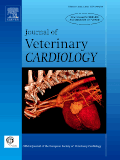
Journal of Veterinary Cardiology
Empowering Veterinary Professionals with Cutting-Edge FindingsJournal of Veterinary Cardiology is a leading scientific publication dedicated to the field of veterinary cardiology, published by ELSEVIER. With an ISSN of 1760-2734 and E-ISSN 1875-0834, this journal plays a crucial role in disseminating cutting-edge research and clinical insights into animal cardiovascular health. With a strong emphasis on the interrelations of veterinary science and physiology, it boasts an impressive ranking in the Q1 category for miscellaneous veterinary studies and a significant position at 69th percentile in general veterinary rankings according to Scopus. Researchers, professionals, and students are encouraged to engage with the journal's diverse array of articles that span basic research to clinical applications, bridging knowledge gaps in veterinary cardiology. This important resource showcases impactful studies from its inception in 1999 and remains a steadfast conduit for the advancement of knowledge in the field through 2024 and beyond.

Journal fur Kardiologie
Nurturing Progress in Cardiovascular Medicine.The Journal fur Kardiologie, published by KRAUSE & PACHERNEGG GMBH, is a pivotal resource in the field of Cardiology and Cardiovascular Medicine. With an ISSN of 1024-0098 and an E-ISSN of 1680-936X, this journal has played a significant role in disseminating valuable research and clinical studies from 1998 until its coverage discontinuation in Scopus in 2017. Despite its Scopus rank being relatively low at #316/324 in its category, it continues to serve as a platform for emerging cardiology research. The journal’s scope encompasses various aspects of cardiovascular health, providing insights that are crucial for researchers, professionals, and students alike seeking to advance their knowledge and practice in cardiology. While the journal is not open access, its contributions to the field are essential for those looking to stay informed about the latest developments in cardiovascular medicine.
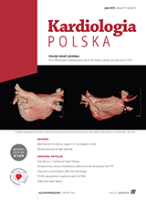
Kardiologia Polska
Your Gateway to Cutting-Edge Cardiac ResearchKardiologia Polska, the esteemed journal of the Polish Cardiac Society, has established itself as a vital resource in the field of cardiology and cardiovascular medicine since its inception in 1954. With an ISSN of 0022-9032 and an E-ISSN of 1897-4279, this journal serves as a platform for groundbreaking research and scholarly articles that contribute to the advancement of heart health. Although currently not an open access journal, it remains an essential reference for practitioners and researchers seeking to stay abreast of the latest developments in cardiovascular science. The journal reflects its scholarly depth through a Category Quartile of Q3 and a commendable Scopus ranking at the 48th percentile in its field. Published primarily in Poland, it caters to a global audience eager to explore comprehensive studies spanning clinical cardiology, innovative therapeutic approaches, and emerging cardiovascular trends. Join a thriving academic community by engaging with the invaluable insights and research contributions found within the pages of Kardiologia Polska.
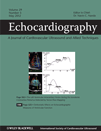
ECHOCARDIOGRAPHY-A JOURNAL OF CARDIOVASCULAR ULTRASOUND AND ALLIED TECHNIQUES
Empowering Cardiovascular Care Through KnowledgeECHOCARDIOGRAPHY: A Journal of Cardiovascular Ultrasound and Allied Techniques is a premier scholarly publication committed to advancing the field of cardiovascular imaging through the dissemination of high-quality research and clinical studies. Published by Wiley, this journal has been a vital resource since its inception in 1984, aiming to bridge the gap between ultrasound techniques and clinical practice over its converged years extending to 2024. With an ISSN of 0742-2822 and an E-ISSN of 1540-8175, the journal is indexed in notable databases and holds a respectable standing in its field, reflected in its Q3 rankings in Cardiovascular Medicine, Miscellaneous Medicine, and Radiology for 2023. Though currently not open access, the journal strives to provide valuable insights and innovative techniques to researchers, professionals, and students alike, fostering a deeper understanding of echocardiography and its impact on patient care. Located in the United States, the journal continues to serve as a cornerstone for contemporary cardiovascular research and education, ensuring that the latest advancements and practices are readily accessible to the medical community.
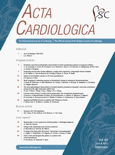
ACTA CARDIOLOGICA
Charting the future of heart health and medicine.ACTA CARDIOLOGICA is a distinguished journal published by TAYLOR & FRANCIS LTD, focusing on the dynamic fields of Cardiology and Cardiovascular Medicine. Established in 1946, the journal has maintained a significant presence in the academic community, providing a platform for cutting-edge research and clinical studies that aim to address challenges in cardiovascular health. With its Q3 rating in both Cardiology and General Medicine categories, it showcases a robust compilation of articles that reflect the evolving landscape of cardiac care. Although ACTA CARDIOLOGICA is not an Open Access journal, it continues to serve a vital role for researchers, professionals, and students dedicated to advancing knowledge in cardiovascular health. This journal, with an ISSN of 0001-5385 and E-ISSN of 1784-973X, is a critical resource for those looking to stay updated on the latest developments and practices in the specialization, contributing significantly to the field until 2024 and beyond.
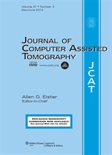
JOURNAL OF COMPUTER ASSISTED TOMOGRAPHY
Advancing Diagnostic Imaging through InnovationJOURNAL OF COMPUTER ASSISTED TOMOGRAPHY, published by Lippincott Williams & Wilkins, stands as a vital resource in the field of Radiology, Nuclear Medicine, and Imaging. Since its inception in 1977, this journal has been dedicated to advancing the understanding and application of computer-assisted tomography, emphasizing innovative research and clinical practices that enhance diagnostic imaging techniques. With an impact factor reflective of its rigorous scholarship and relevance—ranking in the Q3 category—the journal serves as an essential platform for contributors and readers alike, navigating the challenges and opportunities within a rapidly evolving field. Researchers, professionals, and students are encouraged to engage with the rich repository of articles that cover emerging technologies, clinical applications, and theoretical advancements, collectively fostering a deeper comprehension of imaging sciences. Although not currently designated as an open-access journal, it continues to enhance discourse in the community from its headquarters in Philadelphia, PA, maintaining a commitment to the highest standards of academic excellence.

CANADIAN JOURNAL OF CARDIOLOGY
Your Source for Groundbreaking Cardiology DiscoveriesCanadian Journal of Cardiology (ISSN: 0828-282X, E-ISSN: 1916-7075), published by Elsevier Science Inc, serves as a vital platform for disseminating high-quality research in the dynamic field of cardiology and cardiovascular medicine. Since its inception in 1985, this journal has established itself as a leader in the field, currently holding a prestigious Q1 ranking in Cardiology, indicating its significant impact and contribution to medical science. With a Scopus rank of #50 out of 387 in its category and placing in the 87th percentile, the journal showcases rigorous peer-reviewed articles that advance knowledge and practice in cardiology. Although the journal is not open access, it provides valuable insights and research findings that cater to clinicians, researchers, and students who are committed to improving cardiovascular health. As we approach the convergence of years to 2024, the Canadian Journal of Cardiology continues to strive for excellence, facilitating a discourse vital for both academic and clinical advancements in cardiology.

Imaging
Connecting Researchers Through Open Access InsightsImaging, published by AKADEMIAI KIADO ZRT, is an esteemed open-access journal dedicated to the field of medical imaging, established in 2020. With an E-ISSN of 2732-0960 and based in Budapest, Hungary, this journal provides a vital platform for the dissemination of cutting-edge research and advancements in imaging techniques, especially in the realms of radiology, nuclear medicine, and ultrasound technology. While currently positioned in the Q4 category across multiple medical specialties, the journal continues to strive for improvements in visibility and impact, contributing to the evolving discourse in medical imaging. The journal aims to facilitate an inclusive and collaborative environment for researchers, professionals, and students, inviting them to share their findings and insights to enhance the field's development. With open-access availability since its inception, Imaging ensures free and easy access to its content, fostering a greater understanding and appreciation of innovative imaging practices worldwide.

Current Cardiovascular Imaging Reports
Exploring the Future of Cardiovascular DiagnosticsCurrent Cardiovascular Imaging Reports, published by SPRINGER, is a notable academic journal within the field of cardiovascular imaging. With its ISSN 1941-9066 and E-ISSN 1941-9074, this journal has been a critical resource since its inception in 2008, aiming to disseminate high-quality research and reviews in the realm of cardiovascular diagnostics and imaging technologies. Though currently categorized within the Q3 and Q4 quartiles for various fields such as Applied Microbiology and Biotechnology, Histology, and Cell Biology, its impact and relevance are growing steadily. Researchers and practitioners can benefit from the insights presented in this journal, especially as it covers advancements and practical applications in cardiovascular imaging techniques crucial for enhancing patient care. Given its ongoing commitment to open access, although not currently available, readers can engage with significant research findings that may inform future studies and applications in cardiology. With plans to converge towards 2024, this journal is poised to facilitate the exchange of knowledge and foster innovation within its dynamic field.